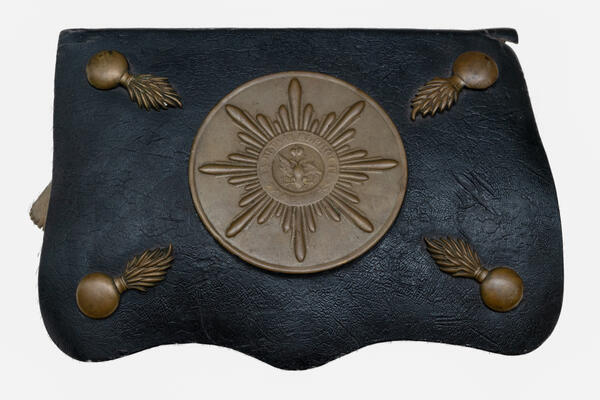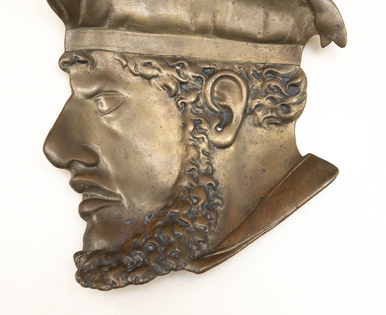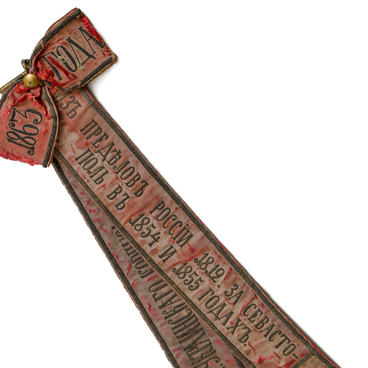In the Armed Forces of the Russian Empire, the bag in which the cartridges were carried was part of a serviceman’s equipment. Most often it was made from yuft —leather of cattle, which was tanned for greater strength. These bags could last for over ten years.
At the end of the 18th century, many military leaders began to notice that soldiers were wearing uncomfortable uniforms. The clothes were very tight, and the trousers sometimes had to be even moistened before being put on. There was even a special instruction for those who taught recruits: “Dress little by little, from week to week, so that he is not suddenly bound and disturbed.”
In 1786, the Field Marshal General, the first commander-in-chief of the Black Sea Fleet, Grigory Aleksandrovich Potemkin, provided the infantrymen with a more comfortable uniform. The soldiers were given a jacket that was tightly buttoned, wide cloth pants with a leather bottom and a leather helmet with a visor. Narrow high boots were replaced by low shoes with wide tops. In addition to weapons, the ammunition included a knapsack for things, a harness with a loop — a sword was put into it, — a mannerka, a flask for water, as well as ammunition bags.
Cartridge bags were carried on the waist. They were fastened with a special flap on copper or bronze pins — small rods. There were usually two of these bags in a soldier’s gear and they held 60 to 100 rounds of ammunition.
The bag of the Preobrazhensky Life Guards Regiment from the museum’s collection was made of black leather in the middle of the 19th century. During the reign of the Emperors Nicholas I and Alexander II, such pouches were used by the lower ranks of the army infantry.
On the front side of the bag there is a round copper emblem with the double-headed eagle. Around it is the inscription “For Faith and Loyalty”. The corners are decorated with copper signs of bombs and torches.
Inside the bag there is a compartment for ammunition and a small pocket. And in a small compartment on the outer side — it fastens with a leather button — there were spare flints and small rifle accessories.
The pouch was fastened with two buckles to a sling — a special belt, which was usually made of bleached moose leather.
The bag was donated to the museum by the Military Medical Museum of the city of Leningrad in 1959.
At the end of the 18th century, many military leaders began to notice that soldiers were wearing uncomfortable uniforms. The clothes were very tight, and the trousers sometimes had to be even moistened before being put on. There was even a special instruction for those who taught recruits: “Dress little by little, from week to week, so that he is not suddenly bound and disturbed.”
In 1786, the Field Marshal General, the first commander-in-chief of the Black Sea Fleet, Grigory Aleksandrovich Potemkin, provided the infantrymen with a more comfortable uniform. The soldiers were given a jacket that was tightly buttoned, wide cloth pants with a leather bottom and a leather helmet with a visor. Narrow high boots were replaced by low shoes with wide tops. In addition to weapons, the ammunition included a knapsack for things, a harness with a loop — a sword was put into it, — a mannerka, a flask for water, as well as ammunition bags.
Cartridge bags were carried on the waist. They were fastened with a special flap on copper or bronze pins — small rods. There were usually two of these bags in a soldier’s gear and they held 60 to 100 rounds of ammunition.
The bag of the Preobrazhensky Life Guards Regiment from the museum’s collection was made of black leather in the middle of the 19th century. During the reign of the Emperors Nicholas I and Alexander II, such pouches were used by the lower ranks of the army infantry.
On the front side of the bag there is a round copper emblem with the double-headed eagle. Around it is the inscription “For Faith and Loyalty”. The corners are decorated with copper signs of bombs and torches.
Inside the bag there is a compartment for ammunition and a small pocket. And in a small compartment on the outer side — it fastens with a leather button — there were spare flints and small rifle accessories.
The pouch was fastened with two buckles to a sling — a special belt, which was usually made of bleached moose leather.
The bag was donated to the museum by the Military Medical Museum of the city of Leningrad in 1959.



